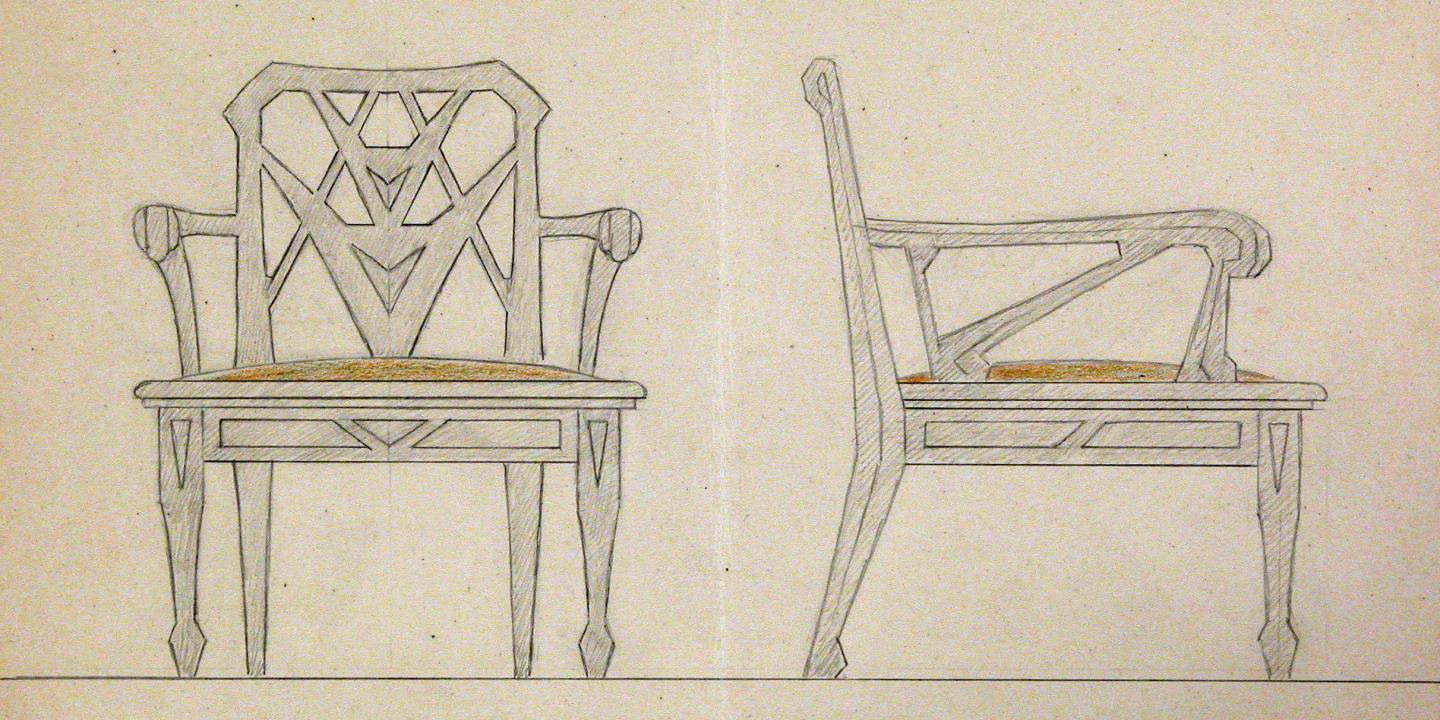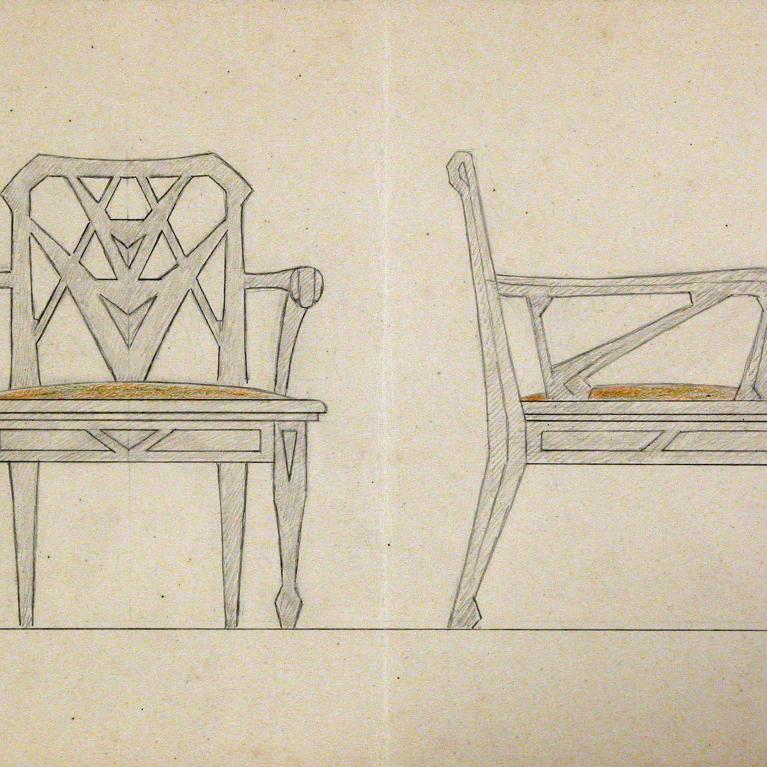The Decorative Woodworking Art Collection
The collection comprises about 500 artworks: furniture, floor and wall decorations, multifunctional ware, boxes, candlesticks, figurines and wattle-work.
Furniture preserved in the collection shows local fashion and tastes for interiors in the 1930s, characterised by attempts to establish a national style. Furniture sets were executed after the sketches of Ansis Cīrulis, Jūlijs Madernieks, Arvīds Dzērvītis and Jēkabs Bīne. Other artists of the time such as Hugo Mercs, Augusts Lauris, Emīls Balodis, Ēriks Rubenis, Jānis Laduzāns are represented in the collection with smaller objects: candlesticks, chests, desk sets and souvenirs. The collection holds also wattle-work of the 1930s: ware, decorative plates and baskets made from spruce and pine tree roots, fashioned by Otīlija Kaža and Emma Priedīte – outstanding masters in the field.
The collection of figurines which gained great acclaim from the part of local population during the 1960s is represented by either humorous or ironical woodcuttings characteristic to the this period fashioned by Līze Dzeguze, Krišjānis Kugra, Eduards Sidrabs and Arnolds Roga. Accentuation of natural properties of material itself can be perceived in the artworks by Rūdolfs Mākulēns, Uldis Salaks, Reinis Ritums, Dionīsijs Pauģis and others.
In the 1970s and 80s decorative woodworking is viewed in close relationship with architecture. Floor and wall interior decorations in wood made by the artists Jānis Poļaks, Dzintars Spalle, Guntars Zvaigzne, Andris Melders and Oļģerts Keterliņš supplement the collection.
The most essential directions in the contemporary decorative woodworking art find reflection in Jānis Straupe's compositions. Minor attention being paid to the function of utility and decorativeness, the accent lies on the properties of the material itself which helps the artist to express his artistic idea.

